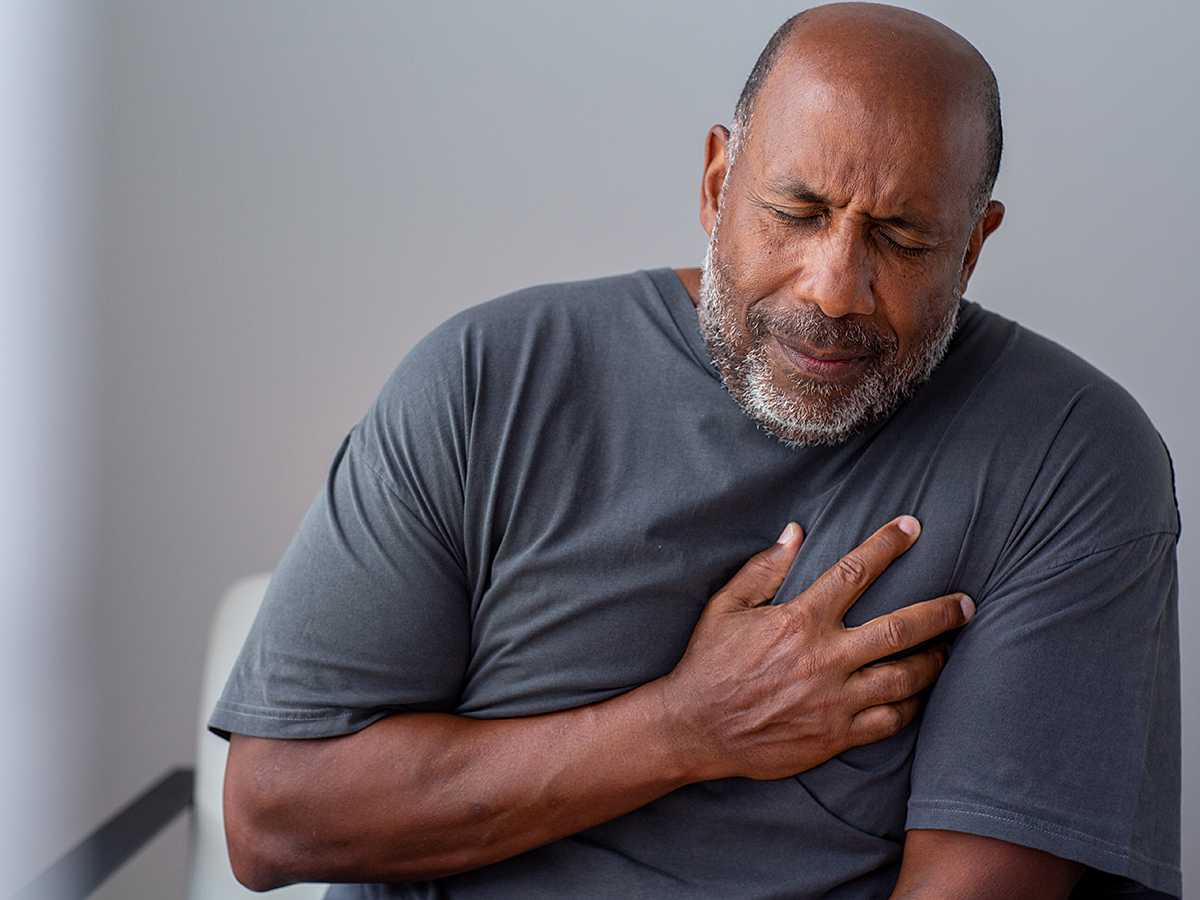Learn how to tell if what you’re experiencing deserves medical attention
 Heart disease remains the No. 1 cause of death in the United States, and for decades health officials have communicated to ensure the public knows the signs of a heart attack. But not all heart disease results in heart attacks.
Heart disease remains the No. 1 cause of death in the United States, and for decades health officials have communicated to ensure the public knows the signs of a heart attack. But not all heart disease results in heart attacks.
February is American Heart Month, so let’s mark this important occasion by talking about other common heart-related conditions and how to identify them.
Heart Failure
Heart failure occurs when the heart muscle doesn’t work efficiently at pumping blood and can’t meet the body’s oxygen requirements. Heart failure is relatively common in the United States, affecting more than 6 million Americans, according to the U.S. Centers for Disease Control and Prevention (CDC). Still, heart failure can develop gradually and worsen over time, and many people don’t realize they have it until it’s a serious problem.
Signs of heart failure include:
- Pain in the chest
- Coughing
- Unexplained weight gain
- Excess urination
- Dizziness or fatigue
- Shortness of breath
- Excess fluid retention, swollen lower extremities
Heart failure is treated surgically and nonsurgically, often with medication. That said, the best treatment is prevention. So make healthy lifestyle choices — eat nutritious meals, quit if you smoke, incorporate exercise and manage stress on a daily basis — to lower your risk of heart failure.
Heart Valve Disease
Heart valves keep blood flowing in the right direction through this most-crucial organ. Heart valve disease occurs when one or several valves in your heart don’t work properly, disrupting bloodflow through your heart and potentially causing problems throughout the body.
Some signs of heart valve disease to look out for:
- Pain in the chest
- Heart palpitations
- Shortness of breath
- Lightheadedness
- Swollen lower extremities
Heart valve disease can sometimes be caused by a previous heart attack, high blood pressure, rheumatic fever from untreated strep throat, or an issue that’s been present since birth, known as a congenital condition.
Heart valve disease is one of the things a doctor is checking for when they listen to your heartbeat with a stethoscope, as it can be identified by a “whooshing” sound, what's known as a heart murmur. It’s also common for people with heart valve disease to have swollen limbs.
Arrhythmia
Cardiac arrhythmia is a disturbance of the electrical impulses that regulate the heart’s beating, resulting in an improper heartbeat — this can be too fast, too slow or irregular in pattern.
An episode of arrhythmia can be very unsettling, but sometimes there are no symptoms at all. Signs can include:
- Pain in the chest
- Heart palpitations, fluttering
- Dizziness
- Shortness of breath
- Anxiety
- Fatigue
- Sweating
Arrhythmia can be caused by narrowed heart arteries, abnormal valves, cardiomyopathy (heart muscle disease), or heart damage caused by a prior heart attack, heart failure or surgery.
Atrial Fibrillation (AFib)
Atrial fibrillation is a commonly treated type of arrhythmia. This kind of arrhythmia is usually characterized by a rapid heart rate that results in poor blood flow. Atrial fibrillation can cause blood clots, stroke and heart failure.
Atrial fibrillation can be present without any symptoms at all, but these are the most common ones experienced:
- Rapid or irregular heartbeat
- Pain in the chest
- Heart palpitations, fluttering
- Fatigue, weakness
- Sweating
- Dizziness
- Shortness of breath
- Anxiety
Your risk for atrial fibrillation may be lowered by foregoing caffeine or visiting your doctor to regularly have your heart checked. Taking steps to lower your risk for AFib may also lower your risk of stroke.
Heart Attack
While a heart attack is often characterized by a pressure or pain in the chest, it can affect men and women differently.
Men typically experience:
- Nausea or vomiting
- Squeezing chest pain
- Jaw, neck or back pain
- Shortness of breath
Women typically experience:
- Nausea or vomiting
- Jaw, neck or upper back pain
- Chest pain (but not always) – usually in lower chest or upper abdomen
- Shortness of breath
- Fainting
- Indigestion
- Extreme fatigue
Women are more likely to feel less-obvious warning signs than men in cases of a heart attack. It’s important to notice if they occur all at once – your life can depend on quick intervention.
Cardiac Arrest
Cardiac arrest is often confused with a heart attack, but while heart attacks can happen over hours and days, a cardiac arrest is a sudden loss of heart and breathing function, resulting in unconsciousness.
Because cardiac arrest occurs abruptly, it’s important to recognize symptoms, and get help:
- Pain in the chest
- Lightheadedness, dizziness
- Heart palpitations
- Shortness of breath
Cardiac arrest is a medical emergency. It requires immediate CPR and the use of a defibrillator until you’re able to get to a hospital.
Stroke
A stroke occurs when the blood supply to the brain is interrupted. While the damage occurs to the brain, the blood clots that cause a stroke often stem from a cardiovascular issue, such as atrial fibrillation.
The telltale signs of a stroke:
- Difficulty walking, issues with coordination
- Blurred vision or vision loss
- Difficulty speaking
- Numbness or weakness
- Fatigue
When you know the signs and symptoms of different heart events, you’re better prepared to deal with them when they happen to you or someone you’re with. If you, a family member or friend suspects a heart complication, call your doctor or seek medical care immediately.
